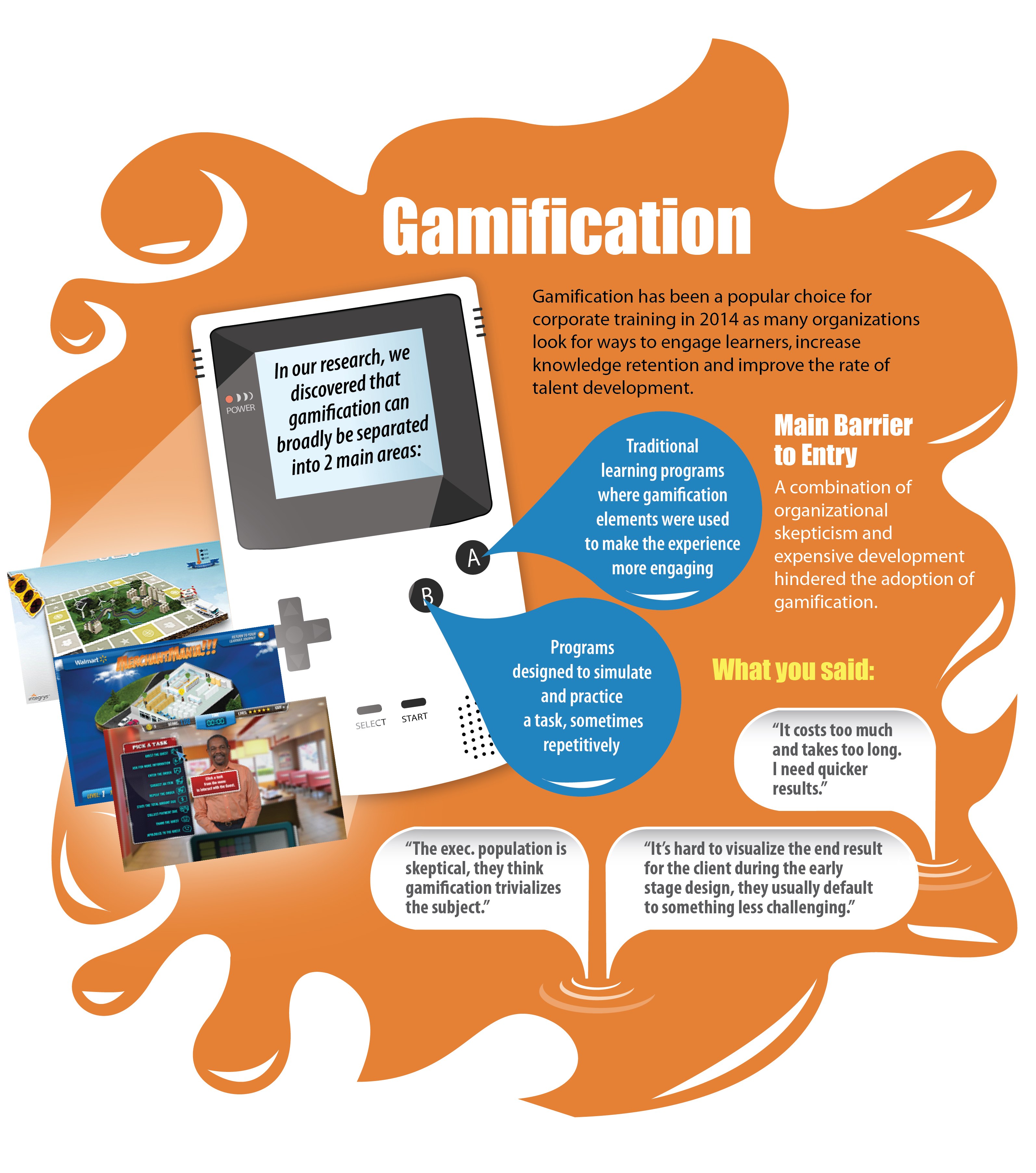An increasing number of organizations are turning to gamification. It has been tried and tested at corporate level to increase learner engagement and has met with varying degrees of success.
In 2014, Gartner reported that by 2015, 50% of organizations managing innovation processes will gamify aspects of their business. Furthermore, in a research study by PEW Research, 53% of respondents stated that by 2020 gamification will be widely adopted by most industries, the communications scene, and most of all education.
With these figures in mind, if you’ve been considering gamification but got comfortable sitting on the fence, perhaps it’s time you jumped off to find out how it could improve the performance of your business?
Below are some of the key considerations for any company that has a desire to implement gamification to improve the quality and overall success of its training.
-
Countering skepticism
If you’re an advocate of gamification in training, getting senior executives and key stakeholders on your side should be an important priority. Researching industry successes and presenting the results of impact studies which highlight the benefit of gamification are effective in getting decision makers to see the value of game-based training. If you’re still meeting with scepticism, try to get them to test out an existing gamified program to tip the scales in your favour. If senior executives show enthusiasm, it could create a ripple effect by generating more positive attitudes among people in other areas of the business toward gamification.
-
Setting the appropriate tone
Yes, games should be fun. Yes, games should be quirky and entertaining. But this doesn’t mean they should be silly or childish. This is a common enough misconception. Engaging employees with game elements doesn’t mean making the subject matter seem less significant in any way. A game-based training solution can involve challenges, missions, or business simulations, but the fact that it incorporates game elements should not diminish the importance of the training content. When developing gamification for training, remember that it is training! It is designed to develop skills and improve performance. Don’t let the ‘game’ itself distract you from what it is you are trying to achieve.
-
Testing it in the classroom first
Whenever possible, gamification should be tested in the classroom first. Avoid investing in developing online training programs that incorporate gamification without having tested it in the real world. The classroom is the ideal (and most cost-effective) place to test, modify, and amend gamification. Test it out, see what success it brings, get feedback from your learners, and highlight the results to senior management to secure buy-in for investment in further training.
This article provides some useful tips on how you can gamify your classroom first before making the decision to develop an online training solution.
-
Making it a social experience
One of the most appealing aspects of gamification is the fact that it is interactive and quite often compels people to compete and/or work together, thus making it an enjoyable, social experience. This is something every organization should keep in mind when developing gamified training. Getting your employees to interact with each other will help to engage them more, keep their attention and interest high during training, and increase the likelihood of training being successful.
Making the learning experience enjoyable and memorable is a key to success. When approached in the right way, gamification is excellent at achieving both.
-
Choice of development tools
If you haven’t already made the move into eLearning, there are a number of questions organizations must consider. Is it a suitable choice for our workforce? Should it replace or simply support our existing methods of training? And of course, what will it cost us to develop?
Before commencing on a custom development, do your research and determine whether or not you can create your game using a third-party tool. A number of excellent gaming engines exist that could allow you to develop a game-based training solution without breaking the bank.
In 2014, Interactive Services ran a qualitative research survey on blended learning targeting senior learning professionals. We generated some interesting feedback on the topic of gamification in training, highlighted in the infographic below.

